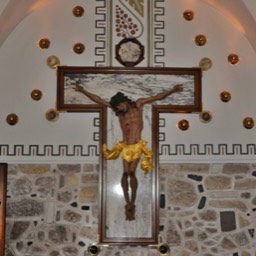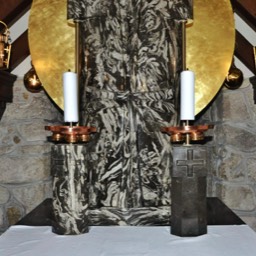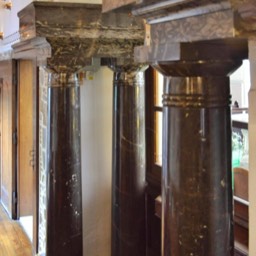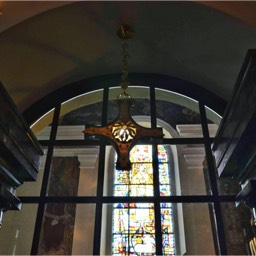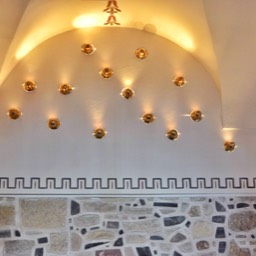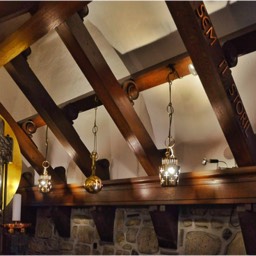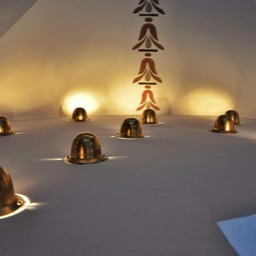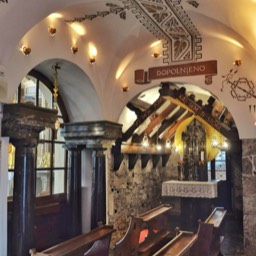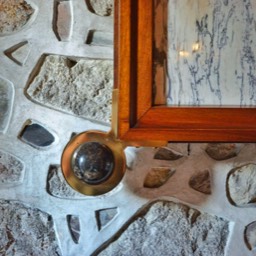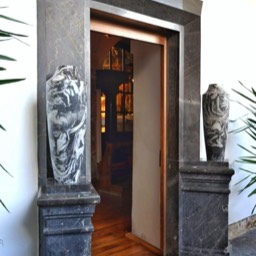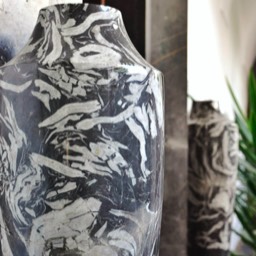Kapela Božjega groba
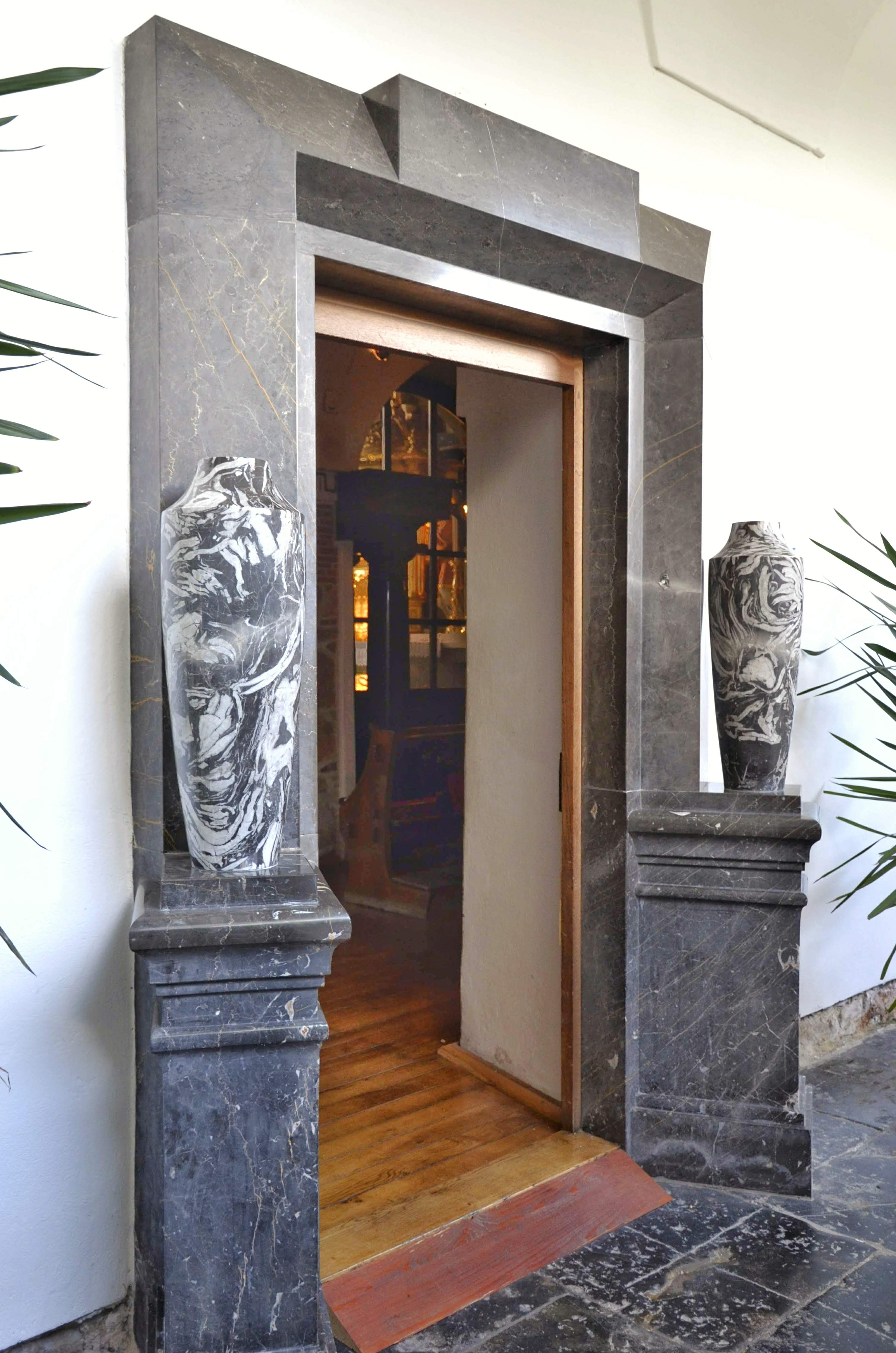
The chapel of the Holy Sepulchre at the Franciscan monastery in Kamnik is located in the corridor by the presbytery of the order's church. It is a unique and complex work of Plečnik's art, full of symbolism. Designs for a chapel were made in 1952 and the chapel was finished in 1954. The monastery chapel was meant to function as an oratory, and for displaying a creche and a representation of the Holy Sepulchre. The architect was aided by the Franciscan friar, Martin Perc. Before this, Plečnik renovated the church in Stranje, and made a design for the baptistery in Nevlje. In the chapel, Plečnik removed the plaster from the stone wall and emphasized the grout lines. The stone wall, with the lower edge of plastered wall, is connected by a sinuous line that functions like a seam. On the altar, there is a monolithic tabernacle made from Podpeč marble, on both sides of which stand two stone and brass candelabra. Behind the tabernacle, there is a shiny circular screen, like a sun. The timber construction is fixed on the ceiling. This is propped against the timber lintel, which sits on the timber consols. On each side, three chandeliers are fixed on inclined beams below the logs. This is meant to recall a tent, an idea that Plečnik took from the writings of the famous German architect and theoretician, Gottfried Semper, who had lived in the middle of the 19th century and who was Plečnik’s primary theoretical inspiration. The walls and the ceiling are decorated with sgraffito – characteristic of Plečnik during his late period. The decorative scheme includes inscriptions, symbols of Christ's martyrdom, and geometric borders. On each side of the window that faces the nave of the church, Plečnik made a couple of polished dark marble pillars. Opposite the altar, there is a Baroque crucifix on an alabaster slab in a frame in the shape of a letter T. A handle on the door has a form of a stylized dove. The furnishings of the chapel reflect its symbolism. On the ceiling, small metal lamps are meant to recall military helmets. The lamps radiate up a short beam of light which creates the appearance of a starry night sky. Ceiling beams above the altar suggest a stable, or Christ's manger, while the monolithic tabernacle symbolizes Christ's rock sepulchre, in which he was buried. The round golden screen behind the altar is like the sun, which rose on the third day, when Christ’s body was no longer in the tomb, as he had been resurrected. Thus the cycle of Christ's nativity, death and resurrection is symbolically presented in the space of this small chapel.
